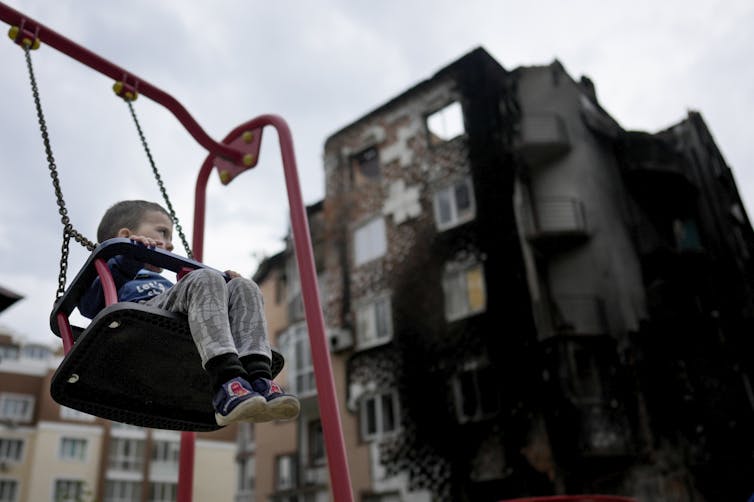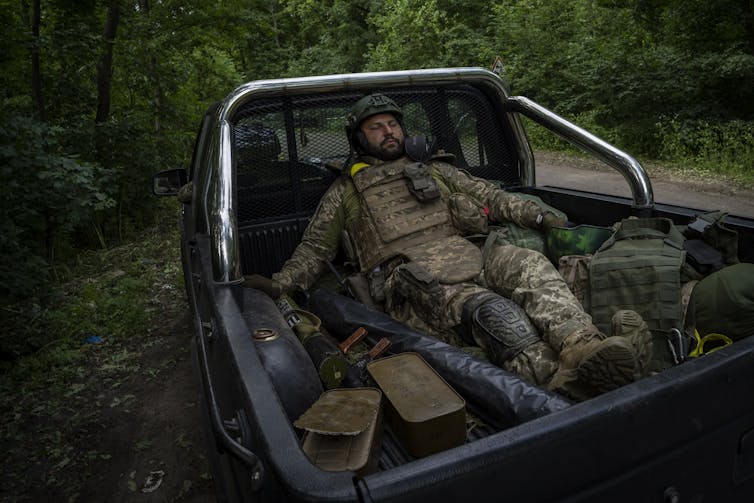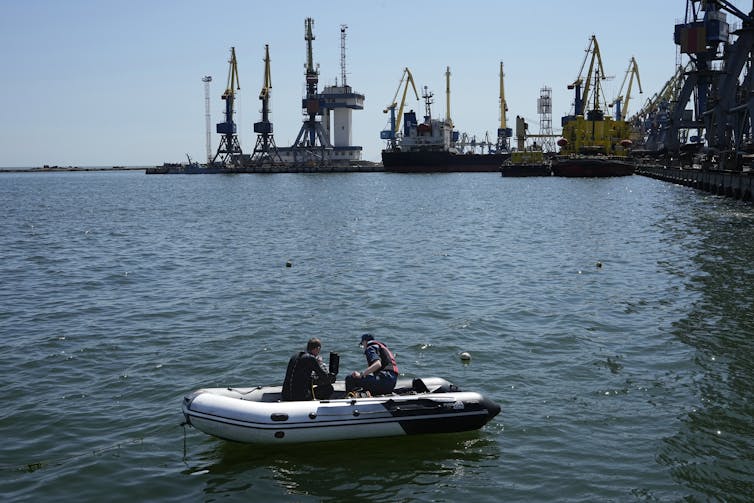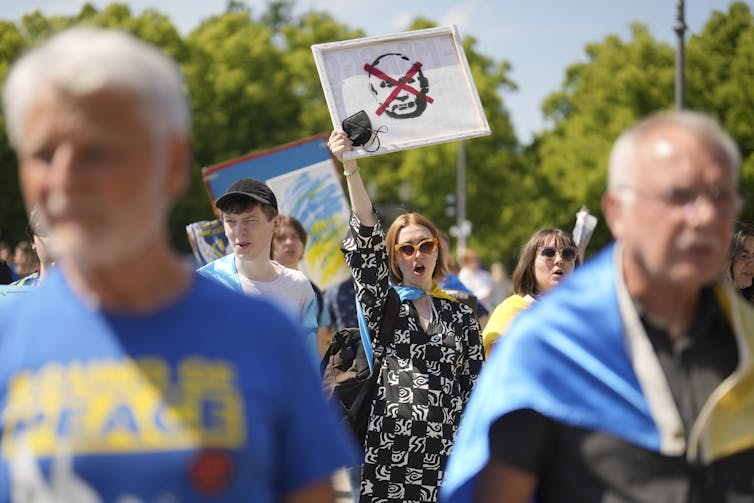
David Roger Marples, University of Alberta
The Russian war on Ukraine has now lasted more than 100 days. It has exacerbated a critical demographic situation in Ukraine, one that saw its population fall from 52.5 million in 1991 at the time of independence to a projected 43.2 million in 2022 prior to the outbreak of war.
The population fall was attributed to a low birth rate, high mortality rate and emigration. During the presidency of Petro Poroshenko from 2014 to 2019, Ukraine became the poorest country in Europe, surpassing Moldova in this unfortunate category.
There is little to suggest that the presidency of Volodymyr Zelenskyy had improved this situation, mired as it was in corruption, an unreliable judiciary and a parliamentary system dominated by business moguls. The entire cabinet was changed six months after Zelenskyy was sworn in. Banks charged interest rates of more than 15 per cent, but many of those taking out loans rarely repaid them.
The war has dramatically changed this picture for the worse. To date, more than 14 million people have left their homes and six million of these have fled from Ukraine.
A large number of Ukrainians have moved to Russia, some voluntarily, and others at the behest of the occupying army.
On May 2, NBC News interviewed Zelenskyy, who accused Russia of deporting 200,000 children from Ukraine, including orphans and children separated from their parents by the war.
Resisting Ukrainian control
Russia has switched its focus from the northern area around the Ukrainian capital of Kyiv and in the south in Kherson region to concentrate on the east. The goal is to capture all of the Donbas, the eastern part of Ukraine that’s been under separatist control since 2014.
The east of this territory, the former industrial heartland of Ukraine with its coal and iron ore resources, split from Ukraine in the spring of 2014. Known as the Donetsk and Luhansk People’s Republics, they have relied on violence and Russian support to resist renewed Ukrainian control.
For years, Russia declined to recognize them as independent states. In 2022, however, the situation changed. Vladimir Putin declared that Ukraine had carried out genocide there and it was necessary to defend them. Russia accepted their independence and opted to “liberate” them.

The tactics have been deliberately destructive, with missile strikes and artillery obliterating communities before the Russian advance. Today, cities such as Mariupol and Severodonetsk, as well as many smaller towns, are completely destroyed.
This form of warfare ensures maximum casualties. In Mariupol, captured by the Russians on May 17, 21,000 civilians have reportedly died. In this city and others such as Bucha, on the outskirts of Kyiv, the invaders butchered civilians and left them in open graves.
Officially, however, Russia is still not even at war. It is engaged in a “special military operation” in Ukraine to remove a “neo-Nazi” regime.
And yet, from Bucha to Mariupol to Kharkiv and Severodonetsk, there have been direct attacks on civilians, on residential buildings, schools and kindergartens. It’s hard not to conclude that the goal is to depopulate Ukraine and render it uninhabitable.
Exacerbating African hunger
In similar vein, Russia has expropriated grain from Ukraine and in at least one case, exported 100,000 tonnes to Syria, one of its closest allies. Russia has been conducting military operations in Syria for seven years.
In turn, Russia’s blockade of Ukrainian ports is preventing Ukrainian grain from reaching its markets in the Middle East and Africa: Egypt, Lebanon, Senegal, Sudan and other states face acute hunger. Cameroon, Tanzania, Uganda and Sudan source more than 40 per cent of their wheat imports from Russia and Ukraine.
The expansion of the impact of the war to some of the world’s poorest areas also seems calculated. Putin has offered to open up ports such as Odesa for grain transport if international sanctions on Russia are lifted.
In short, food is being used as a political weapon. The Black Sea is also heavily mined, which renders such deliveries a dangerous operation.

‘Intent on destruction’
It’s clear that both within and outside Ukraine, the costs of the war are already exceedingly high. Ukraine faces an enemy intent on its destruction, but it has problems also with its allies.
Both France and Germany have resisted the isolation of Putin’s Russia. France’s president Emmanuel Macron has insisted that Russia must not be humiliated in Ukraine.

The statement seeks a diplomatic solution to end the war. But it sounds ominously like French acknowledgement of Russia’s right to intervene in a neighbouring territory.
German Chancellor Olaf Scholz has also appeared reluctant to provide Ukraine with heavy weapons and has been described by opposition leader Friedrich Merz as “a miserable friend” to the occupied country.
Ukraine is facing a struggle for survival. Its population could fall to 30 million by the time the war ends, with cities destroyed, crops expropriated and thousands more killed and wounded. It needs unified and committed support.![]()
David Roger Marples, Distinguished University Professor of Russian and East European History, University of Alberta
This article is republished from The Conversation under a Creative Commons license. Read the original article.

